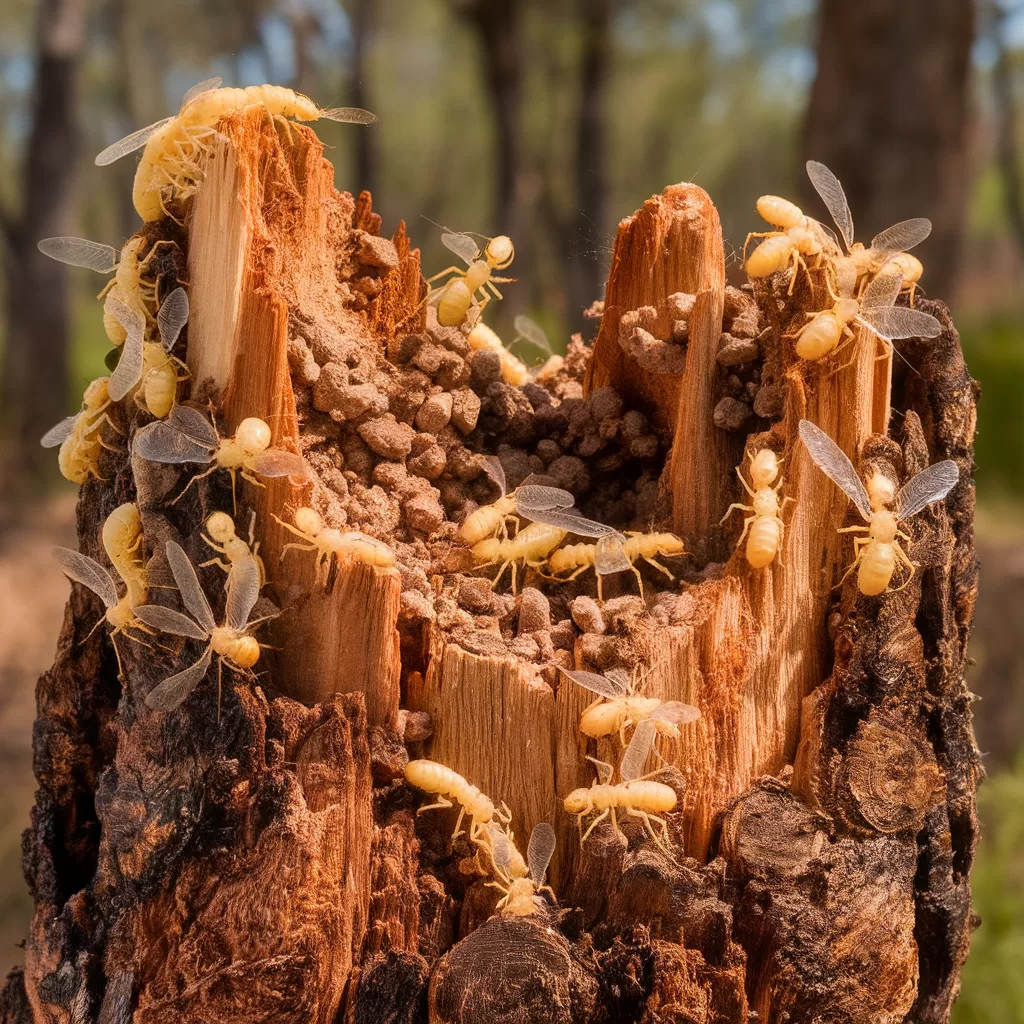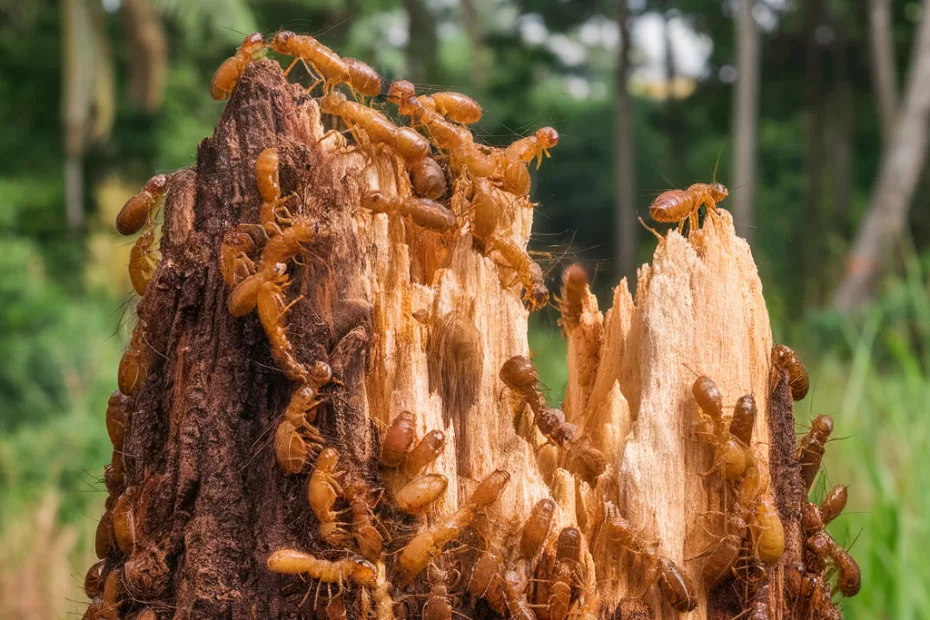Rotting tree stumps might seem harmless, but they can become a hidden financial burden if left unattended—especially because termites love them.
Here’s why ignoring these stumps could cost you far more than the effort of removing them:
Why Termites Target Rotting Stumps
- Ideal Habitat ➼ Rotting wood is soft, moist, and rich in cellulose, making it a perfect food source and breeding ground for termites.
- Colony Expansion ➼ A single stump can sustain a termite colony for months, allowing them to multiply before spreading to other structures.
- Proximity to Your Home ➼ Even stumps far from your house aren’t safe. Termites can travel 100+ feet in search of new food, eventually reaching your home’s wooden floors, or foundation.
The Hidden Costs of Neglect
- Structural Damage ➼ Termites cause $5+ billion in property damage annually in the U.S. alone. Repairing compromised beams, walls, or foundations can cost thousands of dollars.
- Treatment Expenses ➼ Eradicating an infestation requires professional fumigation or bait systems, which can range from $500 to $2,500+, depending on severity.
- Lower Property Value ➼ Untreated termite damage can deter buyers and reduce your home’s resale value.
- Insurance Gaps ➼ Most homeowners insurance policies do not cover termite damage, leaving you fully liable.
Proactive Solutions to Save Money
- Remove Stumps Promptly ➼ Grind or dig out stumps promptly after tree removal.
- Treat remaining Wood ➼ Apply termite-resistant chemicals to stumps you can’t immediately remove.
- Regular Inspections ➼ Have a pest control expert check your property annually for early signs of termites.
- Landscaping Alternatives ➼ Replace stumps with non-wood materials (e.g., gravel, fresh soil) or plant termite-resistant trees like cedar or redwood.

Don’t Wait—Act Now
A rotting stump might seem like a minor eyesore, but it’s essentially a termite “welcome mat.” Investing in removal or treatment today could save you from devastating costs tomorrow. Remember: Prevention is always cheaper than cure.
Tip: If you live in a termite-prone area (e.g., warm, humid climates), take extra caution—subterranean termites are most active in these regions.
By addressing rotting stumps proactively, you protect both your home’s structural integrity and your wallet. Don’t let complacency turn a small problem into a financial nightmare.




Termites ….. yuck
Thanks for the rotten stump insight ! 😁
Thanks for the STUMP advice D::D:D:D:D::D
you dont want termites, believe me
Concise and informative. I learned something new today about stumps……..